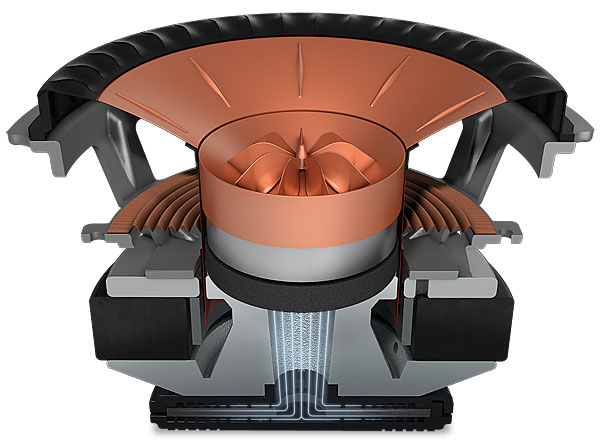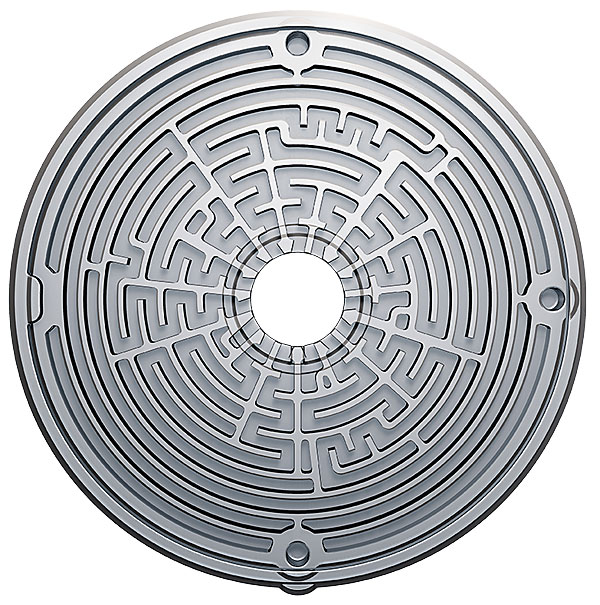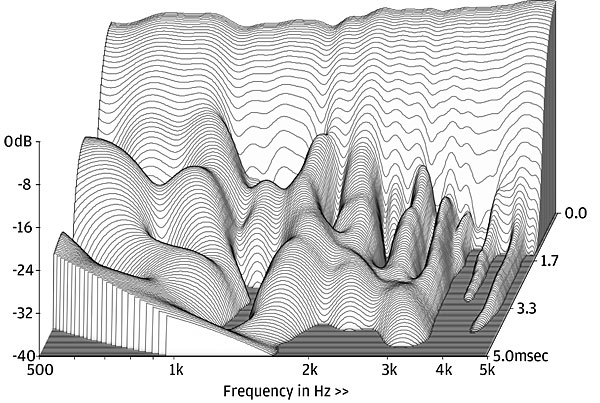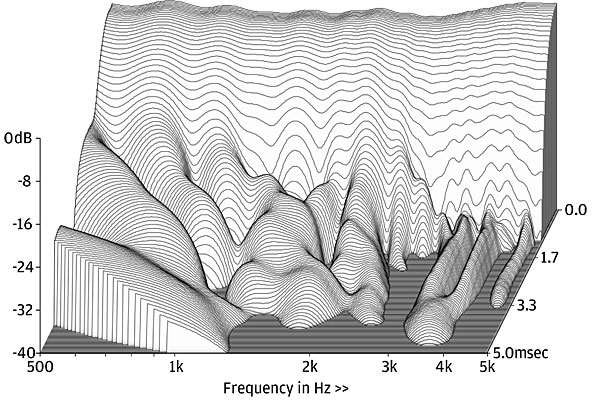KEF LS50 Meta Loudspeaker Metamaterial
The headline differences between the LS50 and new 'Meta' version are driven as much by the re-engineered crossover and evolution of the Uni-Q driver as they are by KEF's novel metamaterial insert, ensuring the new speaker enjoys a smoother, cleaner response at low and mid/presence frequencies. However, the application of AMG's (Acoustic Metamaterials Group) sound absorbing matrix – attached behind the Uni-Q tweeter – has an audible and measurable impact across the vital midrange and presence bands [see CSD waterfalls, below].


The term 'metamaterial' is potentially confusing because its application here has nothing to do with a material. Instead it's a method of achieving a property – in this case sound absorption – that could not otherwise be achieved using common porous damping materials such as long-haired wool, foam or bonded-acetate fibre. These traditional damping techniques rely on wave propagation through the material and require a depth comparable to the wavelengths involved – impractical when dealing with a finite cabinet space like the LS50's.


By contrast, KEF's metamaterial is a 100mm-diameter ABS disc that hosts an array of quarterwave resonators, each tuned to a specific frequency and harmonics. By controlling the size and tuning of each resonator, KEF claims to smoothly absorb sound over a usefully wide range.
In practice these resonators take the form of 2mm square-section channels, realised as a computer-modelled maze, each exiting at the centre of the disc via a series of ducts. The rear output of the Uni-Q tweeter is guided directly toward these ducts and into the sound-killing resonator channels [see illustration, opposite]. Working in concert, these resonators deliver an effective absorption bandwidth of ~600Hz-5kHz beyond which traditional foam attenuation takes over. PM

















































